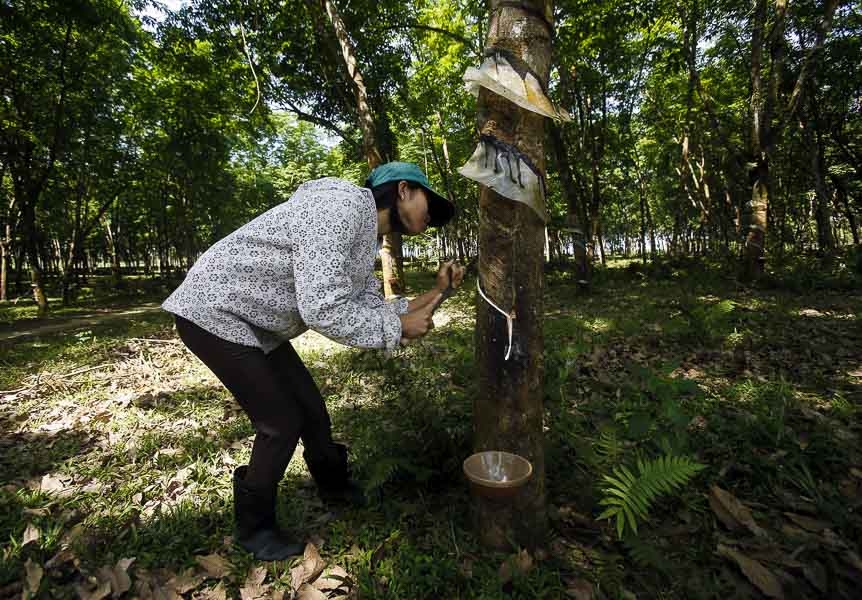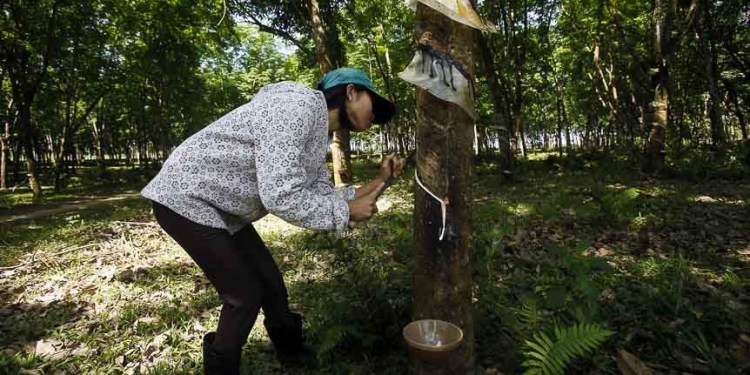Rubber prices this year will be stable but low prices can be expected from next year until 2022 due to over-supply, according to the Ministry of Agriculture.

Minister of Agriculture Veng Sakhon said yesterday at a workshop on technology transfer that global rubber supply will be about 12.7 million tonnes this year, leaving a shortfall of about 36,000 tonnes.
“The price of rubber could be stable if the price of crude oil was $54 to $60 per barrel,” Mr Sakhon said, pointing out that current prices are between $45 to $48 per barrel.
He added that from 2018 until 2022 the supply of rubber would rise by more than demand, which would push prices down again.
However, he said that from 2023 the price would rise as demand overtakes supply.
Mr Sakhon said fluctuating prices were due to supply and demand, while other factors which affected the price of rubber included the global economy, crude oil prices, fluctuating currency exchange rates, and prices of other commodities on the market.
The price for natural rubber was on average $1,940 per tonne and Cambodia exported about 41,652 tonnes in the first four months of 2017, compared with the same period last year. However, the price of rubber on the global market now is about $1,700 per tonne.
To boost the rubber sector and help Cambodian smallholder farmers in the rubber industry, the Cambodian Rubber Research Institute collaborated with the International Rubber Research and Development Board to conduct the workshop.
The board consists of nine countries – Cambodia, Thailand, Vietnam, Malaysia, Sri Lanka, Australia, France, Philippines and China – and the workshop was to share experiences and transfer technology to smallholder farmers.
The workshop also aimed to address challenges in the rubber sector and seek effective solutions to ensure quality and sustainable development.
Mr Sakhon said it was important to transfer technological knowledge to stakeholders in the rubber sector to ensure the sustainability of the industry.
Datuk Abdul Aziz Kadir, secretary-general of the International Rubber Research and Development Board, said the board’s role was to build capacity in the rubber sector.
The board, he said, provided technical training to member countries.
“We have been conducting workshops in different countries, including Thailand and Vietnam. This is part of our capacity building effort for member countries,” said Mr Abdul Aziz.
Land for cultivating rubber has increased to about 437,000 hectares, 64 percent of which is controlled by rubber industry firms and the rest by family-run operations, according to the Agriculture Ministry.
Cambodia exported about 50,000 tonnes of rubber in the first quarter of 2017.
























